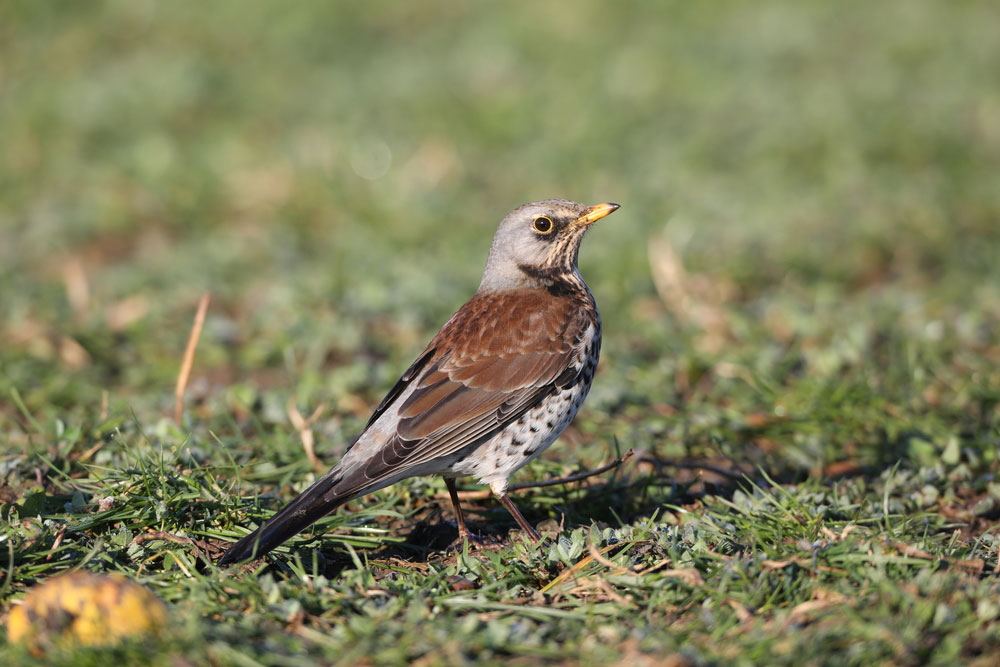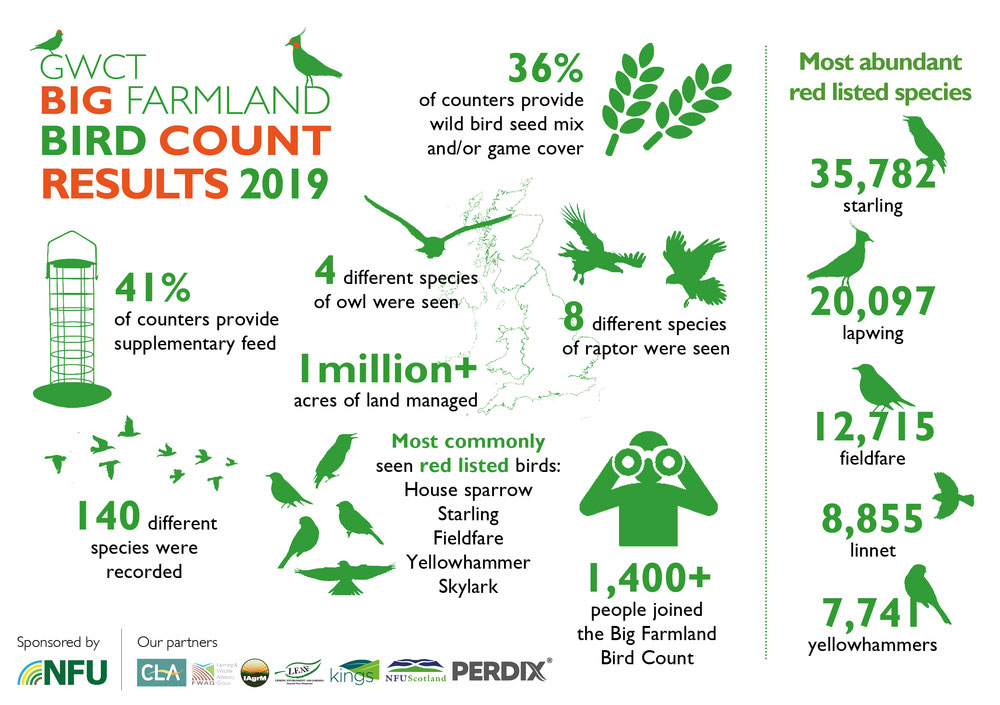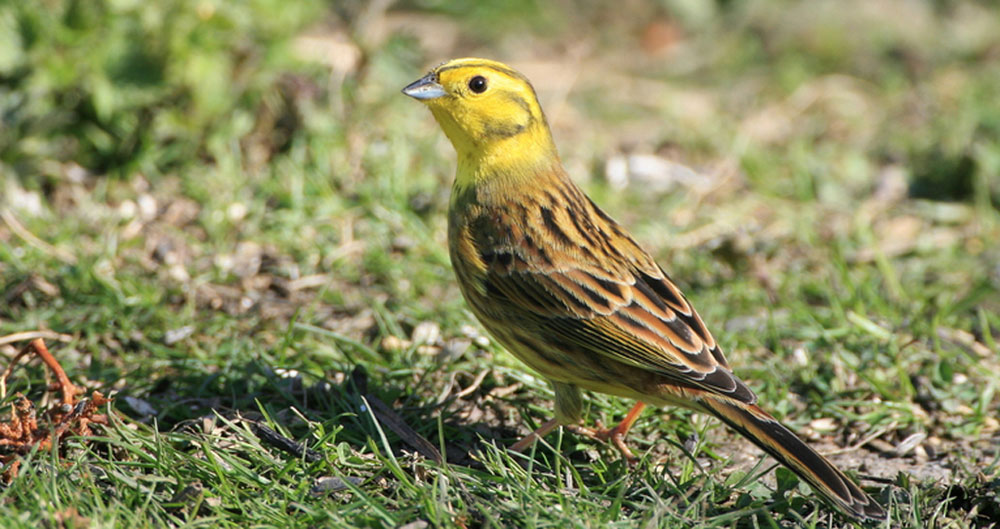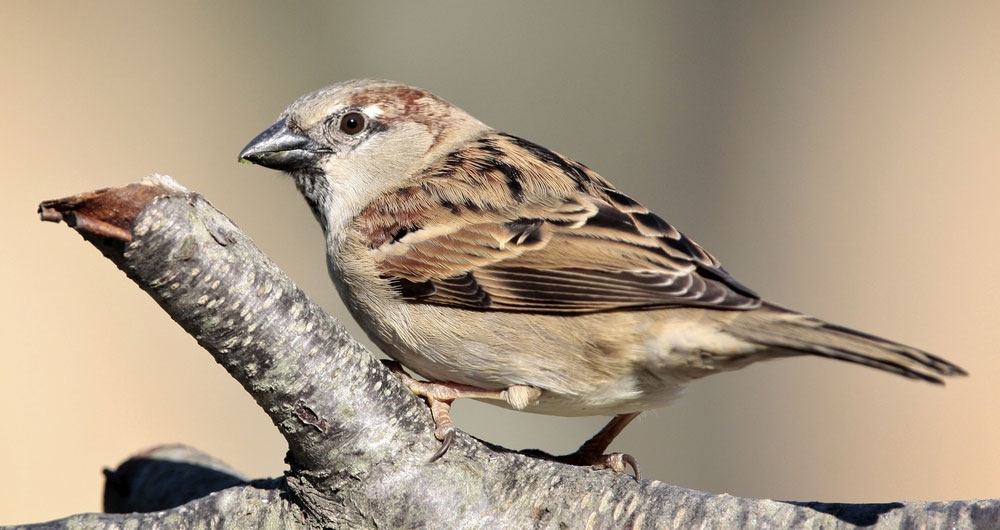Results show 1,400 people – a 40% increase on last year – recorded 140 species over 1 million acres in the Game & Wildlife Conservation Trust (GWCT) initiative which took place between February 8th to 17th.
Encouragingly, a total of 30 red-listed species were recorded, with 5 appearing in the most-commonly seen species list. These included fieldfares, starlings, house sparrows, yellowhammers and song thrushes, with the first four seen by over 30% of the farms taking part.
The five most abundant birds seen were woodpigeons, starlings, lapwings, black-headed gulls and rooks. A total of 148,661 were found, making up nearly 50% of the total number of birds recorded.
“It’s brilliant to see an increase in the number of participants,” said Jim Egan, who has co-ordinated the count for the past six years.
“I’m particularly pleased by the way the facilitation funds and farmer clusters have worked together to embrace this across a landscape scale."
“The fact that in, many cases, farmers and birders have worked together and inspired each other shows the power of sharing our skills and knowledge. A huge congratulations to everyone involved.”

Pictured above: the Fieldfare is included on the red-listed species.
The average farm size of those taking part was 739 acres, with 66% growing arable crops, 52% having beef or sheep, and 13% growing field vegetables. There were also dairy farms, horticulture units, poultry producers and pig producers submitting counts.
The survey areas included important environmental features such as hedges, woodland ponds, grass margins, ditches and trees.
Minette Batters, President of the NFU, the main sponsor of the count, said:
“It is often unappreciated that many farmers provide habitats and additional feeding for birds during the winter months. The Big Farmland Bird Count is a fantastic way for farmers to record the birdlife found on their farms. That is why I was really pleased that the NFU could sponsor this year’s count and that so many more farmers took part.”
“I’d like to thank all those farmers who braved Storm Erik on launch day to carry out the count despite driving rain and strong winds. It’s great that many different threatened species were recorded this year such as lapwing and fieldfare that I saw on my own farm.”

Farmers from every county in England took part and there were also responses from Northern Ireland, Scotland, Wales and Austria.
Norfolk had by far the most returns, with 145 farmers completing the survey. This was followed by Suffolk with 92, Herefordshire with 63 and Hampshire with 60.
The most-commonly seen species were blackbirds, woodpigeons, blue tits, robins and pheasants.

Pictured above: the Yellowhammer was seen by over 30% of the total number of birds recorded.
CLA vice-President Mark Tufnell said:
“I am delighted to hear that 1,400 farmers, including many CLA members, took part this year. That’s an increase of 40% from 2018 and the highest number to date. I was also encouraged by the news that five red-listed species appeared on the most-commonly seen list, which serves to highlight the importance of the work that many farmers and landowners do on habitat management.”
“We saw and heard three pairs of grey partridges during our lookout, which was a real joy. It’s one of the privileges of farming.”
The BFBC was launched in 2014 to highlight the positive work done by farmers and gamekeepers in helping to reverse the decline in farmland birds. The count offers a simple means of recording the effect of any conservation work currently being instigated by farmers and gamekeepers on their land, such as scatter feeding birds through winter or growing crops specifically to provide seed for birds.
The GWCT would like to extend its thanks to NFU for sponsoring the BFBC, which it delivered in partnership with FWAG Association, LEAF, CLA, Kings and NFU Scotland.
To view the results in full, visit www.bfbc.org.uk
BFBC results - by region
In Norfolk (the best-performing county), 145 farmers took part, recording 116 species across 111,477 acres. The most-commonly seen species were woodpigeon, blackbird, chaffinch, pheasant, blue tit. A total of 21 red-listed species were recorded in each county.
In Suffolk, 92 farmers took part, recording 144 species across 96,710 acres. The most-commonly seen species were woodpigeon, blackbird, pheasant, blue tit and robin. A total of 30 red-listed species were recorded.
In Yorkshire, 72 farmers took part, recording 143 species across 97,903 acres. The most-commonly seen species were blackbird, blue tit, robin, chaffinch and woodpigeon. A total of 30 red-listed species were recorded.
In Hampshire, 60 farmers took part, recording 72 species across 41,977 acres. The most-commonly seen species were blackbird, woodpigeon, robin, pheasant and blue tit. A total of 18 red-listed species were recorded.
In South West, 104 farmers took part, recording 93 species across 22,872 acres. The most-commonly seen species were blackbird, woodpigeon, robin, blue tit and magpie. A total of 22 red-listed species were recorded.
In Scotland, 61 farmers took part, recording 93 species across 57,881 acres. The most-commonly seen species were blackbird, blue tit, chaffinch, pheasant and robin. A total of 18 red-listed species were recorded.
In Wales, 61 farmers took part, recording 93 species across 25,172 acres. The most-commonly seen species were blackbird, blue tit, carrion crow, robin and great tit. A total of 20 red-listed species were recorded.
In Northern Ireland, 22 farmers took part, recording 65 species across 3,642 acres. The most-commonly seen species were magpie, buzzard, chaffinch, robin and wren. A total of 15 red-listed species were recorded.
